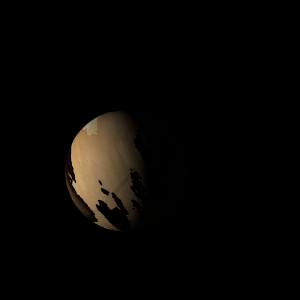|
|
Space Astro
|
Info for exoplanet "Mipthys"
| Scientific (actual) data |
|---|
| Name | Kepler-948 b |
| Planet status | Confirmed |
| Radius | 0.165 |
| Orbital period | 7.76847 |
| Discovered | 2016 |
| Updated | 2021-02-05 |
| Tconj | 2454970 |
| Publication | Announced on a website |
| Detection type | Primary Transit |
| Alternate names | 2MASS J19331205+4131240 b, K01750.01, KIC 6209677 b, KOI-1750 b, KOI-1750.01, WISE J193312.06+413123.7 b |
| Star name | Kepler-948 |
| Right ascension | 293.3° |
| Declination | 41.52° |
| Mag j | 13.624 |
| Mag h | 13.23 |
| Mag k | 13.186 |
| Star distance | 868.017 |
| Star metallicity | 0.17 |
| Star mass | 0.96 |
| Star radius | 0.97 |
| Star sp type | G6V |
| Star age | 4.17 |
| Star temperature | 5501.23 |
| Star alternate names | KIC 6209677, WISE J193312.06+413123.7, KOI-1750, 2MASS J19331205+4131240 |
| Wikipedia article | Kepler-948 b |
Back
| |
| Fictional info (?) |
|---|
| Suggested name | Mipthys |
| Planet type | Cold planet |
| It is the coldest planetary atmosphere in its solar system, with a minimum temperature of 60°K (-213°C), and has a complex, layered cloud structure with oxygen thought to make up the lowest clouds, and sulfur dioxide the uppermost layer of clouds.
Wind speeds can reach 144 metres per second. |
| Atmosphere | Sulfur dioxide | 68% |
| Oxygen | 26% |
| Argon | 3.1% |
| Helium | 2.4% |
| Formaldehyde | 0.1% |
| Atmospheric pressure | 0.0012 bar |
 |
| Moon | Misiji | Huge almost round gaseous asteroid |
| Rheake | Medium-sized potato shaped rocky planetoid |
| Google search for Mipthys |
|
Website by Joachim Michaelis
|
|
|
|